ROLUL DIABETULUI ZAHARAT ȘI AL INFARCTULUI MIOCARDIC ACUT ÎN DEZVOLTAREA FIBRILAȚIEI ATRIALE
DOI:
https://doi.org/10.52692/1857-0011.2022.1-72.18Cuvinte cheie:
diabet zaharat, infarct miocardic acu, fibrilație atrialăRezumat
Diabetul zaharat este una dintre cele mai frecvente afecțiuni medicale cronice și este un factor de risc independent atît pentru infarctul miocardic acut cît și pentru dezvoltarea fibrilației atriale. Atît diabetul zaharat cît și infarctul miocardic acut promoveaza dezvoltarea unui statut proinflamator și de stres oxidativ la nivel de țesut atrial, aceștea fiind substrat al dezvoltării fibrozei atriale, iar în consecință a fibrilației atriale.
Referințe
He J., Yang Y., Zhang G., Lu X. H. Clinical risk factors for new-onset atrial fibrillation in acute myocardial infarction. Medicine, 2019, Vol. 98 (26), e15960.
Zeng R., Chen M., Lian B. et al. Left ventricular ejection fraction and left atrium diameter related to new-onset atrial fibrillation following acute myocardial infarction: a systematic review and meta-analysis. Oncotarget, 2017, Vol. 8.
Aronson D., Boulos M., Suleiman A. et al. Relation of C-reactive protein and new-onset atrial fibrillation in patients with acute myocardial infarction. Am J Cardiol, 2007.
Huang Y., Cai X., Mai W. et al. Association between prediabetes and risk of cardiovascular disease and all cause mortality: systematic review and meta-analysis. BMJ, 2016 .
Casaccia Bertoluci M., Zorzanelli Rocha V. Cardiovascular risk assessment in patients with diabetes. Diabetol Metab Syndr, 2017, Vol. 9, p. 25-38.
Williams R., Colagiuri S., Almutairi R., Aschner Montoya P. et al. IDF DIABETES ATLAS Ninth edition 2019.
Ugowe F. E., Jackson II L. R., Thomas K. L. Atrial Fibrillation and Diabetes Mellitus. Circulation: Arrhythmia and Electrophysiology, 2019, Vol. 12.
Allisgaard J. L., Schjerning A. M., Lindhardt T. B., Procida K., Hansen M. L., Torp-Pedersen C., Gislason G.H. Risk of atrial fibrillation in diabetes mellitus: a nationwide cohort study. Eur J Prev Cardiol , 2016, Vol. 23, p. 621-627.
Cosentino F., Grant P. J., Aboyans V., Bailey C J., Ceriello A. ESC Guidelines on diabetes, pre-diabetes, and cardiovascular diseases developed in collaboration with the EASD. European Heart Journal, 2020, Vol. 41, p. 255-323.
Kitano D., Takayama T., Nagashima K., Akabane M., Okubo K., Hiro T., Hirayama A. A comparative study of time-specific oxidative stress after acute myocardial infarction in patients with and without diabetes mellitus. BMC Cardiovascular Disorders, 2016, 102.
Russo I., Frangogiannis N. G. Diabetes-associated cardiac fibrosis: cellular effectors, molecular mechanisms and therapeutic opportunities. J Mol Cell Cardiol, 2016, 90.
Liu C., Fu H., Li J. et. al. Hyperglycemia aggravates atrial interstitial fibrosis, ionic remodeling and vulnerability to atrial fibrillation in diabetic rabbits. Anadolu Kardiyol Dergisi, 2012, 12.
Jia G., Whaley-Connell A., Sowers J. R. Diabetic cardiomyopathy: a hyperglycaemiaand insulin-resistance-induced heart disease. Diabetologia, 2018, 61.
Wang A., Green J. B., Halperin J. L., Piccini J. P. Atrial Fibrillation and Diabetes Mellitus. Journal of the American College of Cardiology,2019,Vol. 74, p.8.
Lucci C., Cosentino N., Genovese S., Campodonico J., Milazzo V., De Metrio M., Rondinelli M., Riggio D., Biondi M. L., Rubino M., Celentano K., Bonomi A., Capra N., Veglia F., Prognostic impact of admission high-sensitivity C-reactive protein in acute myocardial infarction patients with and without diabetes mellitus. Cardiovasc Diabetol, 2020, Vol. 19, p. 183.
Stamboul K., Lorin J., Lorgis L., Guenancia Ch., Beer J. C., Touzery C., Rochette L., Vergely C., Cottin Y., Zeller M.. Atrial Fibrillation Is Associated with a Marker of Endothelial Function and Oxidative Stress in Patients with Acute Myocardial Infarction. PLOS ONE, 2015.
VÎLCEA A., PUŞCHIŢĂ M. Dimetilarginina asimetrică, factorul promotor al afecţiunilor cardiovasculare. Practica Medicalå, 2019, Vol. 14, p. 67.
De Boer R. A., van Veldhuisen D. J., Gansevoort R. T., Muller Kobold A. C., van Gilst W. H., Hillege H. L. et al. The fibrosis marker galectin-3 and outcome in the general population. J Intern Med., 2012, Vol. 1, p. 55–64.
Bivona G., Bellia C., Lo Sasso B., Agnello L., Scazzone C., Novo G. et al. Short-term Changes in Gal 3 Circulating Levels After Acute Myocardial Infarction. Arch Med Res., 2016, Vol. 7, p. 521–5.
Lippi G., Cervellin G., Sanchis-Gomar F. Galectin-3 in atrial fibrillation: simple bystander,player or both? Clin Biochem., 2015, Vol. 12, p. 818–22.
Kirchhof P., Benussi S., Kotecha D., Ahlsson A., Atar D. et al., ESC Guidelines for the management of atrial fibrillation developed in collaboration with EACTS. Eur Heart J, 2016, Vol. 37, p. 2893-2962.
Fu H., Liu Ch., Li J., Zhou Ch., Cheng L., Liu T., Li G. Impaired atrial electromechanical function and atrial fibrillation promotion in alloxan-induced diabetic rabbits. Cardiol J, 2013, Vol. 20, p. 59-67.
Descărcări
Publicat
Număr
Secțiune
Licență
Copyright (c) 2022 Buletinul Academiei de Științe a Moldovei. Științe medicale

Această lucrare este licențiată în temeiul Creative Commons Attribution 4.0 International License.



